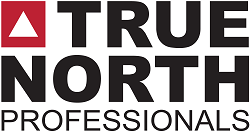It can be complex and stressful to recruit a C level executive. When you perform interviews and determine each candidate’s merits, applicants evaluate you and your business as well.
The executive recruitment process is more complicated than selecting the initial level individual for the job. It attracts and secures the best applicants whose values match with the purpose and principles of your business. It doesn’t take the same recruiting procedure as with lower-level workers to bring on C-level executives. For starters, they are compensated more. They bring an important experience as well. Although a bad entry-level worker can slow things down, a bad employee at the C-level can cause the organization to run out of control. It is necessary to make the correct decision when recruiting at C-level.
To hire the best talent for your company, many employment agencies may help your recruiting procedure. The True North Professional is one of the best employment agencies; with our team of committed consultants focusing on their proven direct and digital networks to provide the right applicant for your projects. The True North Professionals team will discover the inspiration, ambition, talents, vulnerabilities, and cultural fit of an applicant for your company with our business experience as well as a variety of hiring resources.
5 Recruitment Mistakes
Implementing an effective recruiting process is critical for businesses of all sizes. There is no assured effective recruiting process here, but understanding the challenges and possible issues you may encounter, will enable you to prevent them or comply with them if they occur.
Demolishing others’
Some panellists are enthusiastic about applicants who give several examples and presentations of competence and self-assurance. They feel pleased that they can get the job done by this descriptive, hostile, tough-talking person! But if you recruit people who discuss what their past colleagues lacked or overlooked, or who present themselves as the sole source of accomplishment, you’re asking for trouble.
Those have nothing positive to say about former colleagues, peers, or managers are also not going to be satisfied with the people in your business. Somewhere throughout their lives, it’s doable for them to have had a few unpleasant experiences. But if they volunteer false data or brag about it, pay attention; it should take continuous questioning before you can get a false story out of them.
Bad listening and understanding:
Bad listening is often misread by interviewers as passion, strength, a can-do stance, and charm. Yet recruiting candidates who regularly start chatting before the interviewer finishes posing a question is dangerous. If politicians continue to jump the gun, instead of knowing what you care about, they make presumptions about what you want to hear. For successful partnerships, client advocacy, thoughtful decision-making, and challenge-solving, that’s a problem.
If candidates have so much to discuss that they discourage the moderator from engaging in the dialogue, it’s also a negative indication. If individuals speak about a hurricane with no space for conversation, it could mean that they can’t support or train others, they don’t share well, or they’re authoritarian freaks of power. And note that candidates do not respond explicitly to interview questions. “It’s reasonable for applicants to be self-protective, but it’s much better to say, “I haven’t had the same experience, but it’s similar to my job on the XYZ initiative. Here’s what happened…’ that they feel more secure about if they deflect the query to some other topic. You’ll need their absolute candour, not spurious or hiding behaviour if you’re going to work together.
Failure to consider hiring from inside
The leading leaders might be right under your nose might even! Filling c-level executive positions internally will make practical sense, as it reduces the expense and resources involved with searching for external applicants. A current team member may already be familiar with the procedures, principles and purpose of the organization. Chances are, in a new position, he will get “going in the right direction” quicker than an outsider would. Another possible advantage is that encouraging and educating your individuals will improve their confidence and efficiency.
Recruiting from inside will also preserve valuable information that would be missed if individuals left the company or team.
Using Discrimination:
Hiring depends on judgement ability, which means that implicit racism must be avoided. You can unintentionally discriminate in favour of individuals who have similar your history, social status, race, age, or gender toward those applicants. Embracing applicants irrespective of all of those attributes means you have a wider pool of potential from which to choose, increasing the odds of finding the right applicant for the role.
Waiting for the best:
You may have in your imagination a vision of the perfect employee, but when you wait for him to arrive, you may adversely affect the performance of the team by leaving it short-staffed for too long. Members of the staff may need to take up the additional workload or work overtime, which may impact their productivity.
Since they are so unusual, employers call “purple squirrels,” great candidates! It’s typically best to recruit someone who meets more of your core criteria, who suits your business culture, and who has soft skills, rather than waiting for someone who perfectly fits the job. When he’s in place, he can pick up job-specific expertise.



